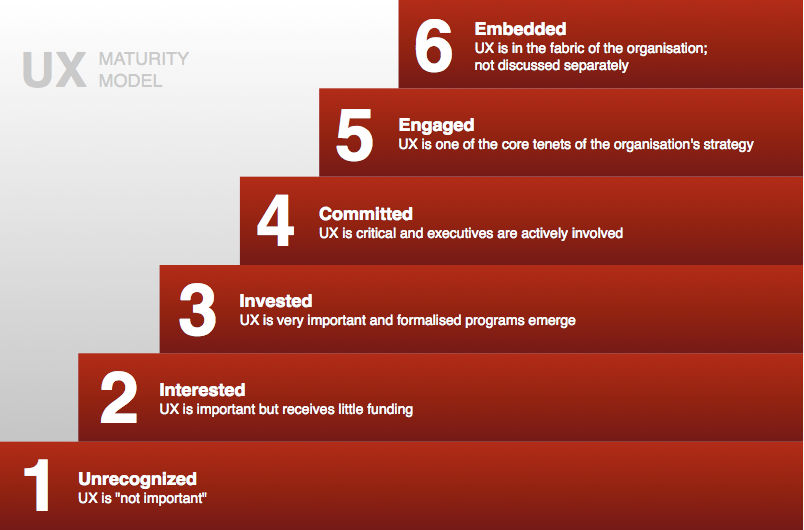In order to get your UX strategy right, you need to dig a little deeper than just into your user’s wants, needs, dreams and desires. One of the key elements, for getting your UX strategy just right, is understanding the business itself.
You must deliver on the overall business strategy to succeed. You cannot be a “user champion” without being a “corporate champion” too. It’s easy to get carried away with the former and neglect the latter – so how do we better understand the business we work for in order to develop our UX strategy holistically.
A Question or Two
What does your company do to earn profits?
You make/design products and services and sell them, right?
Then why is it that so many UX designers struggle with this next question?
What do you need to do to beat your competitors and how can User Experience deliver real impact on this?
The Core of User Experience Strategy
Yet, the answer to that question is what defines the core of your UX strategy. If you don’t know which buttons to push or levers to pull within the organization to achieve external results; you’re shooting in the dark. You can’t control the way your competitors behave, of course, but you can control the way you approach your market and position for advantage.
Much of the knowledge that you need to do this is already available to you. Your colleagues, team members, stakeholders, management, etc. have access to the information you want. You just have to ask for it.
You need to ask questions like:
How are our offerings currently positioned in the market?
What are the operating and ongoing costs of the business?
How does the pricing model work? Why was it chosen over the alternatives?
What are the key factors that influence our overall margin?
What might make a competitor more or less successful in any given year than we are?
What do you think our potential customers prefer in the current competitive offerings?
What are the company’s plans for strategic growth this year, next year and in the longer future?
What categories of product are key to that growth?
It is answers to questions like these that allow you to start asking UX questions that support the answers provided.
For example; if you’re told that category X is the key strategic category for the business. You can then examine how you can draw attention to that category via your app or website without relying on the time tested “giant banner ad”.
Or you might want to examine how you can improve profitability through the user experience by increasing “add on” sales to the same volumes sold in retail stores, thus supplementing a low margin leader product with higher margin support.
The link between the core user experience and the business needs is a vital part of UX becoming a serious contributor to business objectives.

© Johnny Holland, All rights reserved.
Exploring Business Strategy
Businesses have a tendency to produce a fair number of documents that elucidate the strategic direction the business is taking. The smart UX pro will do a fair amount of running around to lay hands upon this documentation and use it wisely to develop their understanding of business strategy to tune the UX strategy to complement and support it.
Look for marketing plans, competitive analysis reports, the operating plan, the 5 year plan (don’t take this too seriously but do look at the near future), supply-chain management plans, industry reports, etc.
You may need a little help working through some of these reports. There’s probably nothing drier and more difficult to tackle at first glance than a company’s annual reports. However, in our experience – there’s always someone in finance just dying to explain these to the layman. In particular, they can point out financial pain points and help you make sense of the headline objectives for the next year.
If you have a dedicated strategy unit in house – go and talk to them too. You may find that there’s somebody there who has been waiting a long time for a UX team member to come and see how they can join minds and come up with valuable strategic output that works in tandem rather than at loggerheads.
Check The Company Vision Too
Vision statements are often taken as marketing BS and treated with a certain amount of sniggering behind the hands when they’re brought out in the light. Yet, the company’s vision provides an excellent means of “sense checking” your UX strategy. If your company has a strategic vision, it’s likely that the senior management team (at a minimum) spent quite a bit of time and effort creating that vision.
Microsoft’s “A PC on every Desktop and in every home” was a classic and easy statement to use. Unfortunately, that vision has been remodelled along with Microsoft’s strategy and it’s a less easy to remember; “to create a family of devices and services for individuals and businesses that empower people around the globe at home, at work and on the go, for the activities they value most.”
However, while the statement may not be as punchy as before – it’s still pretty easy to work out whether your UX strategy aligns with such a vision.
Highlighting where the business strategy and the UX strategy are in harmony and support the company vision will make it much easier for you to promote your work within your company.
During the process, you’ll start to communicate in the language of the business rather than just in the language of UX. This linguistic transformation will also aid your quest to raise the profile of UX – when the executive team fully understands how your work benefits their objectives; they’re much more likely to see the value in that work.

© Frits Ahlefeldt-Laurvig, CC BY-ND 2.0
Summary
Aligning the UX strategy with the Business Strategy is an essential part of getting UX to the forefront and winning support for the work you do. It’s not too complicated to achieve either.
Header Image: © Sebastiaan ter Burg, CC BY 2.0











